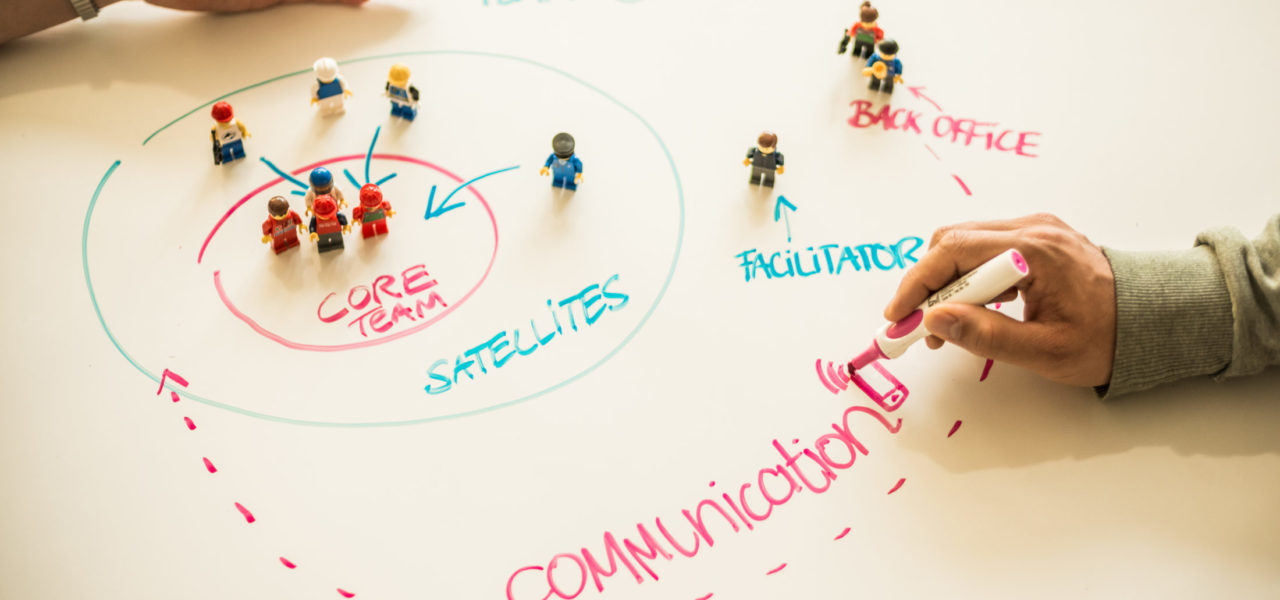
Agile coaching and organisational design
Taylorism was yesterday: Why the Agile Coach should also be an organisational designer, you can read below.
Agile coaching and organisational design
While digitalisation has innovated production processes, communication and marketing channels, the way we humans structurally work together in organisations has remained almost unchanged. The Taylorist principles of division of labour still characterise the majority of the world of work today. However, rigid structures, silo thinking and control instead of trust have long since become outdated.
Freedom of action, decision-making, participation and responsibility are moving into the agile focus, for which there are still no proven solutions under current organisational models and existing paradigms.
Some organisations, whether large or small, are experimenting and expanding the boundaries of existing models, thus setting off developments towards new forms of collaboration.
Alternative organisational models (holocracy, spotify model) are being taken up and tested in order to live a contemporary corporate culture, to meet the needs of employees and to survive in the complex, global and digital context of companies, countries and markets. At launchlabs we also work with fluid roles and a high degree of personal responsibility in our own projects in order to be able to ensure quality for the customer in an end-to-end process.
Self-determined and self-organised work means shorter communication channels, greater identification with decisions made and faster product development. This way of working is quite challenging, because self-organisation has to be learned. The newly gained freedom can quickly become overwhelming. This is the case when employees are released into self-organisation without the appropriate skills and training. In order to prevent a negative attitude towards change, transparent communication and correct expectation management with all those involved helps.
Because a system of self-organisation needs time to adapt and only works with a scope that is defined in advance. The use of Agile Maturity Levels can help in Agile Coaching to create clarity about the “right size of the scope”.
At the same time, employees need an advance in trust and freedom for possible failure. Trust brings security and creativity. Those who receive trust from the outside gain a stronger inner trust. Confidence in one’s own abilities increases team cohesion. Approaches to solutions are formulated more quickly and clearly because personal responsibility increases.
Trust also serves as a necessary strategy for reducing the complexity of agile companies. It allows fast and flexible decision making if New Work is seen as a mindset rather than a mere collection of tools. Those who are granted freedom in terms of content and time are more likely to participate in discussions and decision-making.
From developmental psychology we know that we are the sum of our experiences and that the organisation shapes the person. Strategies and actions are needed that prepare employees for the new setting and help them to find their way around it.
The Agile Coach in his role is therefore of great importance for a successful transformation. He works on three levels: individual, team and organisation. While in daily work the focus is often on working with the team, the responsibility for the structure of tomorrow’s organisation should not be left behind. For the current Agile Coach Curriculum in our portfolio we have therefore designed a special module with the topic “Organisational Design”. In this way, we want to make our contribution so that Tayloristic principles are finally a thing of the past.
This article has its origin by Monika Smith and her book “Business Purpose Design”. https://www.business-purpose.com